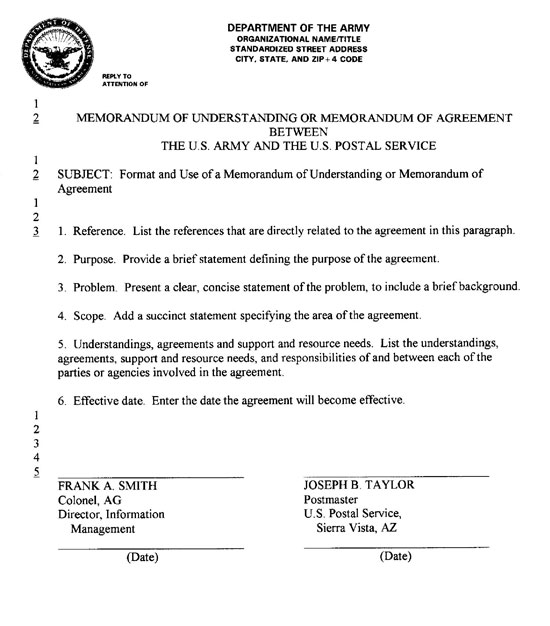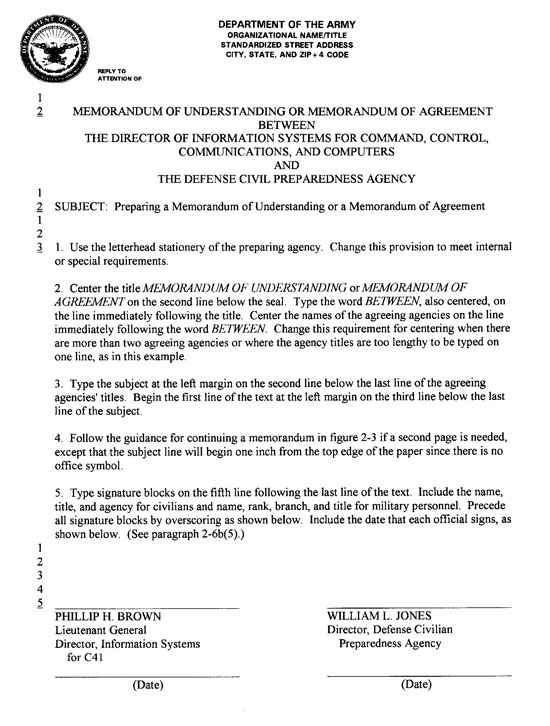Special Purpose Memorandums
Memorandum of Understanding or Memorandum of Agreement
Uses.
Use a Memorandum of Understanding (MOU) or a Memorandum of Agreement (MOA) to document mutually agreed to statements of—
(1) Facts.
(2) Intentions.
(3) Procedures.
(4) Parameters.
(5) Policies of future actions.
(6) Matters of coordination.
Note. Do not substitute an MOA for formal support agreements within one Service or between Services. However, an MOA may be used to document an agreement before writing a more formal one.
Format.
When an MOU or MOA is required, use the format shown in figures 1 and 2.
Heading.
Prepare the MOU or MOA on the letterhead stationery of the preparing or requesting agency. This provision may be altered to meet internal or special requirements of the parties involved in the agreement. Center the title MEMORANDUM OF UNDERSTANDING or MEMORANDUM OF AGREEMENT on the second line below the seal. Type the word BETWEEN, also centered, on the line immediately following the title. Center the names of the agreeing agencies on the line immediately following the word BETWEEN. The requirement for centering may be altered when there are more than two agreeing agencies or where the agency titles are too lengthy to be typed on one line.
(1) Subject.
Type the word SUBJECT: at the left margin on the second line below the last line of the agreeing agencies’ titles.
(2) Text. Begin the first line of the text at the left margin on the third line below the last line of the subject. The basic text will contain, but is not limited to, the following six categories
(a) Reference. List the references that are directly related to the agreement.
(b) Purpose. The paragraph defines or states, in as few words as possible, the purpose of the agreement.
(c) Problem. Present a clear, concise statement of the problem, to include a brief background.
(d) Scope. Add a short and to the point statement specifying the area of the agreement.
(e) Understandings, agreements, support, and resources. List the understandings, agreements, support, and resource needs and responsibilities of and between each of the parties or agencies involved in the agreement.
(f) Effective date. Enter the date the agreement will become effective.
(4) Paragraph numbering.
Paragraph numbering and indentations are the same as for the general use memorandums.
(5)Signature blocks.
Signature blocks on MOUs and MOAs are unique in that signature blocks of both the agreeing parties appear on the same line. Type signature blocks on the fifth line following the last line of the text. Precede all signature blocks by overscoring as shown on figures 1 and 2. Include the name, title, and agency for civilians and name, rank, branch, and title for military personnel. Include the date that each official signs. Place the signature of the senior official on the right. When in doubt as to the seniority, use the signature of the official whose organization is the same as the letterhead.

